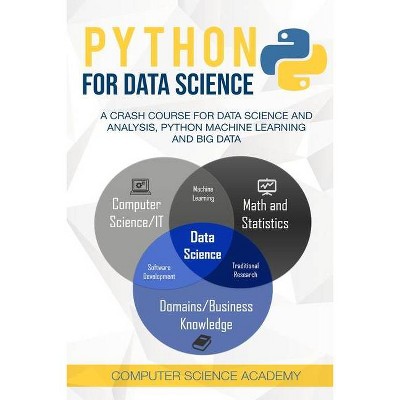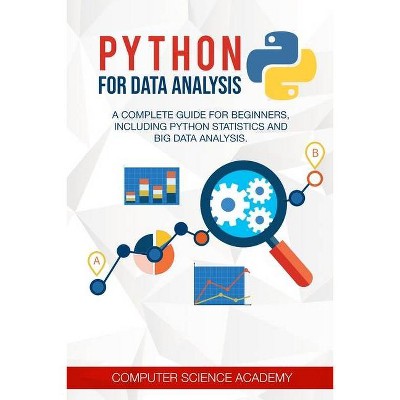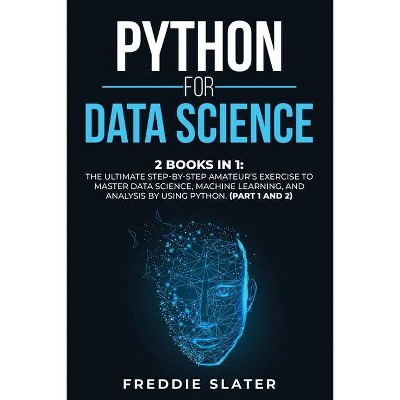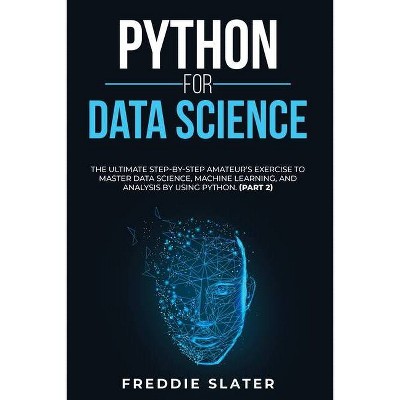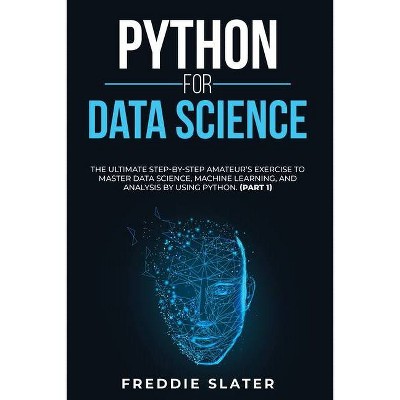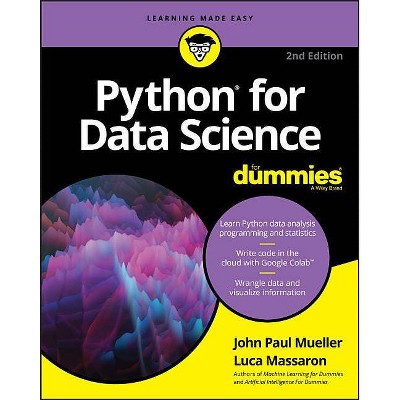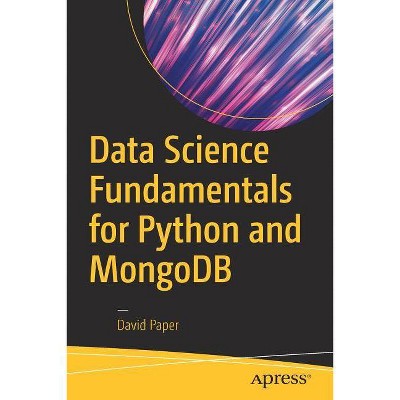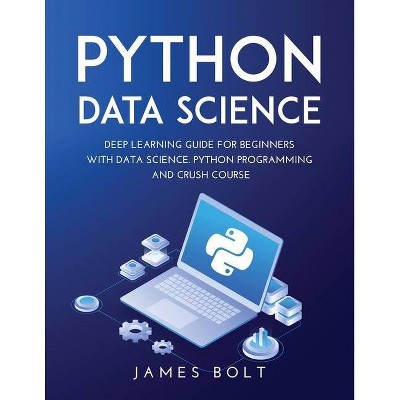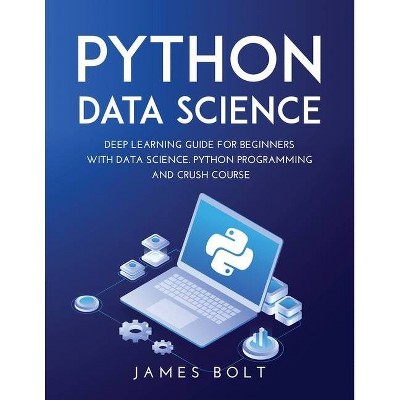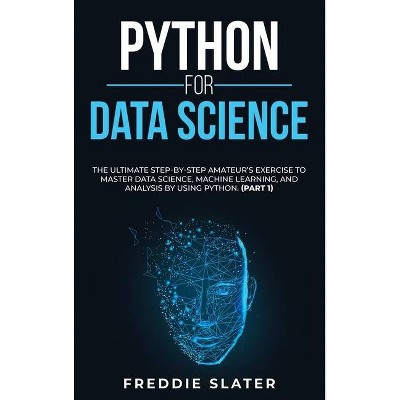Intro to Python for Computer Science and Data Science - by Paul Deitel & Harvey Deitel (Paperback)
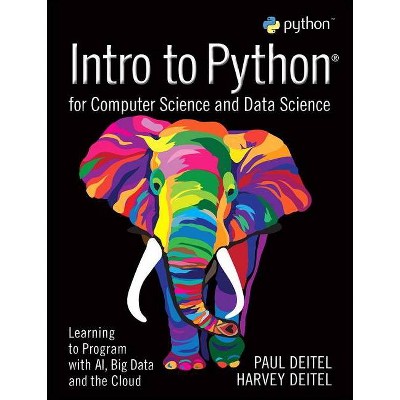
Similar Products
Products of same category from the store
AllProduct info
<p/><br></br><p><b> Book Synopsis </b></p></br></br><i>For introductory-level Python programming and/or data-science courses.</i> </p> <b> </b> </p> <b>A groundbreaking, flexible approach to computer science and data science</b> </p> The Deitels' <b> <i>Introduction to Python for Computer Science and Data Science: Learning to Program with AI, Big Data and the Cloud</i> </b> offers a unique approach to teaching introductory Python programming, appropriate for both computer-science and data-science audiences. Providing the most current coverage of topics and applications, the book is paired with extensive traditional supplements as well as Jupyter Notebooks supplements. Real-world datasets and artificial-intelligence technologies allow students to work on projects making a difference in business, industry, government and academia. Hundreds of examples, exercises, projects (EEPs), and implementation case studies give students an engaging, challenging and entertaining introduction to Python programming and hands-on data science.</p> </p> The book's modular architecture enables instructors to conveniently adapt the text to a wide range of computer-science and data-science courses offered to audiences drawn from many majors. Computer-science instructors can integrate as much or as little data-science and artificial-intelligence topics as they'd like, and data-science instructors can integrate as much or as little Python as they'd like. The book aligns with the latest ACM/IEEE CS-and-related computing curriculum initiatives and with the Data Science Undergraduate Curriculum Proposal sponsored by the National Science Foundation.</p> </p> </p> </p><p/><br></br><p><b> Review Quotes </b></p></br></br><br>"Strikes a good balance between teaching computer science fundamentals and putting data science techniques into practice. Designed to help students not only learn programming fundamentals but also leverage the large number of existing libraries to start accomplishing tasks with minimal code. Concepts are accompanied by rich Python examples that students can adapt to implement their own solutions to data science problems. I like that cloud services are used."<i> --David Koop, Assistant Professor, U-Mass Dartmouth </i> <br>"Fun, engaging real-world examples and exercises will encourage students to conduct meaningful data analyses. This book provides many of the best explanations of data science concepts I've encountered. Introduces the most useful starter machine learning models--does a good job explaining how to choose the best model and what "the best" means. Great overview of all the big data technologies with relevant examples." <i>--Jamie Whitacre, Data Science Consultant </i> <p/> "Great introduction to Python! This book has my strongest recommendation both as an introduction to Python as well as Data Science. A great introduction to IBM Watson and the services it provides!" <i>--Shyamal Mitra, Senior Lecturer, University of Texas </i> <p/> "The best designed Intro to Data Science/Python book I have seen." <i>--Roland DePratti, Central Connecticut State University </i> <p/> "You'll develop applications using industry standard libraries and cloud computing services." <i>--Daniel Chen, Data Scientist, Lander Analytics</i> <p/> "The book's applied approach should engage students. The examples involving the top-down, stepwise refinement of programs illustrate how programs are really developed. A fantastic job providing background on various machine learning concepts without burdening the users with too many mathematical details."<i> --Garrett Dancik, Associate Professor of Computer Science/Bioinformatics, Eastern Connecticut State University</i> <br>"Wonderful for first-time Python learners from all educational backgrounds and majors. My business analytics students had little to no coding experience when they began the course. In addition to loving the material, it was easy for them to follow along with the example exercises and by the end of the course were able to mine and analyze Twitter data using techniques learned from the book. The chapters are clearly written with detailed explanations of the example code, which makes it easy for students without a computer science background to understand. The modular structure, wide range of contemporary data science topics, and companion Jupyter notebooks make this a fantastic resource for instructors and students of a variety of Data Science, Business Analytics, and Computer Science courses. The "Self Checks" are great for students. Fabulous Big Data chapter-it covers all of the relevant programs and platforms. Great Watson chapter! This is the type of material that I look for as someone who teaches Business Analytics. The chapter provided a great overview of the Watson applications. Also, your translation examples are great for students because they provide an "instant reward"-it's very satisfying for students to implement a task and receive results so quickly. Machine Learning is a huge topic and this chapter serves as a great introduction. I loved the housing data example-very relevant for business analytics students. The chapter was visually stunning." <i>-Alison Sanchez, Assistant Professor in Economics, University of San Diego </i> <p/> "I like the new combination of topics from computer science, data science, and stats. A compelling feature is the integration of content that is typically considered in separate courses. This is important for building data science programs that are more than just cobbling together math and computer science courses. A book like this may help facilitate expanding our offerings and using Python as a bridge for computer and data science topics. For a data science program that focuses on a single language (mostly), I think Python is probably the way to go." <i>-Lance Bryant, Shippensburg University </i> <p/> "The end-of-the-chapter problems are a real strength of this book (and of Deitel & Deitel books in general). I would likely use this book. The most compelling feature is that it could, theoretically, be used for both computer science and data science programs." <i>-Dr. Mark Pauley, University of Nebraska at Omaha</i> <br> "I agree with the authors that CS curricula should include data science-the authors do an excellent job of combining programming and data science topics into an introductory text. The material is presented in digestible sections accompanied by engaging interactive examples. This book should appeal to both computer science students interested in high-level Python programming topics and data science applications, and to data science students who have little or no prior programming experience. Nearly all concepts are accompanied by a worked-out example. A comprehensive overview of object-oriented programming in Python-the use of graphics is sure to engage the reader. A great introduction to Big Data concepts, notably Hadoop, Spark, and IoT. The examples are extremely realistic and practical." <i>-Garrett Dancik, Eastern Connecticut State University </i> <p/> "I can see students feeling really excited about playing with the animations. Covers some of the most modern Python syntax approaches and introduces community standards for style and documentation. The breadth of each chapter and modular design of this book ensure that instructors can select sections tailored to a variety of programming skill levels and domain knowledge. The sorting visualization program is neat. The machine learning chapter does a great job of walking people through the boilerplate code needed for ML in Python. The case studies accomplish this really well. The later examples are so visual. Many of the model evaluation tasks make for really good programming practice." <i>-Elizabeth Wickes, Lecturer, School of Information Sciences, University of Illinois at Urbana-Champaign </i> <p/> "An engaging, highly-accessible book that will foster curiosity and motivate beginning data scientists to develop essential foundations in Python programming, statistics, data manipulation, working with APIs, data visualization, machine learning, cloud computing, and more. Great walkthrough of the Twitter APIs-sentiment analysis piece is very useful. I've taken several classes that cover natural language processing and this is the first time the tools and concepts have been explained so clearly. I appreciate the discussion of serialization with JSON and pickling and when to use one or the other-with an emphasis on using JSON over pickle-good to know there's a better, safer way! Very clear and engaging coverage of recursion, searching, sorting, and especially Big O-several "Aha" moments. The sorting animation is illustrative, useful, and fun. I look forward to seeing the textbook in use by instructors, students, and aspiring data scientists very soon." <i>-Jamie Whitacre, Data Science Consultant</i> <br>"For a while, I have been looking for a book in Data Science using Python that would cover the most relevant technologies. Well, my search is over. A must-have book for any practitioner of this field. The machine learning chapter is a real winner!! The dynamic visualization is fantastic." <i>--Ramon Mata-Toledo, Professor, James Madison University </i> <p/> "IBM Watson is an exciting chapter. I enjoyed running the code and using the Watson service. The code examples put together a lot of Watson services in a really nifty example. I enjoyed the OOP chapter--doctest unit testing is nice because you can have the test in the actual docstring so things are traveling together. The line-by-line explanations of the static and dynamic visualizations of the die rolling are just great." <i>--Daniel Chen, Data Scientist, Lander Analytics </i> <p/> "A lucid exposition of the fundamentals of Python and Data Science. Excellent section on problem decomposition. Thanks for pointing out seeding the random number generator for reproducibility. I like the use of dictionary and set comprehensions for succinct programming. "List vs. Array Performance: Introducing %timeit" is convincing on why one should use ndarrays. Good defensive programming. Great section on Pandas Series and DataFrames--one of the clearest expositions that I have seen. The section on data wrangling is excellent. Natural Language Processing is an excellent chapter! I learned a tremendous amount going through it. Great exercises." <i>--Shyamal Mitra, Senior Lecturer, University of Texas </i> <p/> "My game programming students would appreciate these exercises." <i>--Pranshu Gupta, Assistant Professor, DeSales U. </i> <p/> "I like the discussion of exceptions and tracebacks. I really liked the Data Mining Twitter chapter; it focused on a real data source, and brought in a lot of techniques for analysis (e.g., visualization, NLP). I like that the Python modules helped hide some of the complexity. Word clouds look cool." <i>--David Koop, Assistant Professor, U-Mass Dartmouth </i> <p/> "I love the text! The right level for IT students. The examples are definitely a high point to this text. I love the quantity and quality of exercises. Avoiding heavy mathematics fits an IT program well." <i>--Dr. Irene Bruno, George Mason University </i> <p/> "A great introduction to deep learning." <i>--Alison Sanchez, University of San Diego </i> <p/> "I was very excited to see this textbook. I like its focus on data science and a general purpose language for writing useful data science programs. The data science portion distinguishes this book from most other introductory Python books." <i>--Dr. Harvey Siy, University of Nebraska at Omaha </i> <p/> "The collection of exercises is simply amazing. I've learned a lot in this review process, discovering the exciting field of AI. I liked the Deep Learning chapter, which left me amazed with the things that have already been achieved in this field. Many of the projects are really interesting."<i> --José Antonio González Seco, Consultant </i> <p/> "An impressive hands-on approach to programming meant for exploration and experimentation." <i>--Elizabeth Wickes, Lecturer, School of Information Sciences, University of Illinois at Urbana-Champaign </i> <p/> "I was impressed at how easy it was to get started with NLP using Python. A meaningful overview of deep learning concepts, using Keras. I like the streaming example." <i>--David Koop, Assistant Professor, U-Mass Dartmouth </i> <p/> "Really like the use of f-strings, instead of the older string-formatting methods. Seeing how easy TextBlob is compared to base NLTK was great. I never made word clouds with shapes before, but I can see this being a motivating example for people getting started with NLP. I'm enjoying the chapters in the latter parts of the book. They are really practical. I really enjoyed working through all the Big Data examples, especially the IoT ones." <i>--Daniel Chen, Data Scientist, Lander Analytics </i> <p/> "A good overview of various neural networks with coding examples for classification problems for which neural networks are commonly used. The exercises in this chapter will give students insight into how changing the structure of neural networks and the amount of training/testing data affect performance. The Twitter examples covering trending topics, creating word clouds, and mapping the location of users are instructive and engaging. I like the real-world examples of data munging. Reviewing this book was enjoyable and even though I was fairly familiar with Python, I ended up learning a lot." <i>--Garrett Dancik, Associate Professor of Computer Science/Bioinformatics, Eastern Connecticut State University </i> <p/> "I really liked the live input-output. The thing that I like most about this product is that it is a Deitel & Deitel book (I'm a big fan) that covers Python." <i>--Dr. Mark Pauley, University of Nebraska at Omaha</i> <i> </i> <i> <br> </i> <i> <br> </i><br><p/><br></br><p><b> About the Author </b></p></br></br></p> <b>Paul J. Deitel</b>, CEO and Chief Technical Officer of Deitel & Associates, Inc., is an MIT graduate with 38 years of computing and corporate training experience and is an Oracle<sup>(R)</sup> Java<sup>(R)</sup> Champion and a Microsoft<sup>(R)</sup> C# MVP (2012-2014). He is a best-selling programming-language textbook/professional book/video/e-learning author. Paul is one of the world's most experienced programming-languages trainers. Through Deitel & Associates, Inc., he has delivered hundreds of programming courses worldwide to clients, including Cisco, IBM, Siemens, Sun Microsystems (now Oracle), Dell, Fidelity, NASA at the Kennedy Space Center, the National Severe Storm Laboratory, White Sands Missile Range, Rogue Wave Software, Boeing, SunGard Higher Education, Nortel Networks, Puma, iRobot, Invensys and many more. He and his co-author, Dr. Harvey M. Deitel, are the world's best-selling programming-language textbook/professional book/video authors.</p> </p> <b>Dr. Harvey M. Deitel, </b>Chairman and Chief Strategy Officer of Deitel & Associates, Inc., has over 55 years of experience in computing. Dr. Deitel earned B.S. and M.S. degrees in Electrical Engineering from MIT and a Ph.D. in Mathematics from Boston University-he studied computing in each of these programs just before they spun off Computer Science programs. He has extensive college teaching experience, including earning tenure and serving as the Chairman of the Computer Science Department at Boston College before founding Deitel & Associates, Inc., in 1991 with his son, Paul. The Deitels' publications have earned international recognition, with more than 100 translations published in Japanese, German, Russian, Spanish, French, Polish, Italian, Simplified Chinese, Traditional Chinese, Korean, Portuguese, Greek, Urdu and Turkish. Dr. Deitel has delivered hundreds of programming courses to academic, corporate, government and military clients.</p> </p> </p> </p>
Price History
Price Archive shows prices from various stores, lets you see history and find the cheapest. There is no actual sale on the website. For all support, inquiry and suggestion messages communication@pricearchive.us
